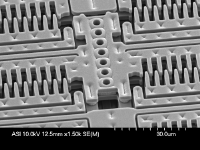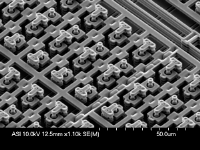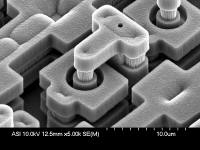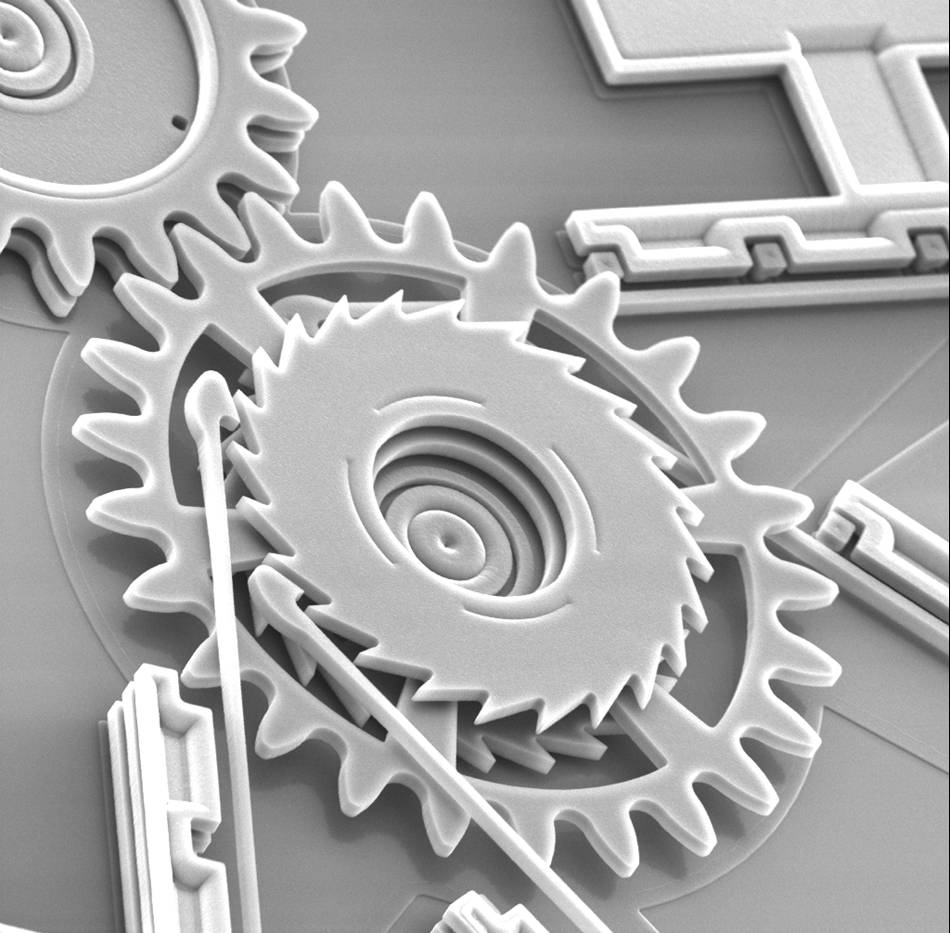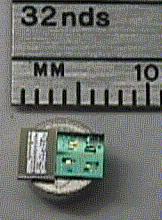|
Mainland High School
Suitable for a Disaster: ISTF 08-1835 |
||||||||
|
Home
Introduction Contest Components One Two  Product Product
Three Fabrics History of Fabrics Smart Fabric Projects Sensors Nano Sensors Power Production Communication Cell Phones 3G Phones Data Transfer Helikites Interoperability Microwaves Relief Agencies Telecommunication Project Assessment Team |
Nanotechnology Sensors
MEMS ( Micro Electrical Mechanical Systems) are machines - sensors, switches, and actuators - that operate on the micro-scale. Due to existing knowledge and technology, they are currently built on silicon chips. They use the same technology as normal systems but on a smaller scale. This reduction in size translates into less energy requirements, less materials, less production cost, and less visibility. These new applications consist of five layers of 2.5-micrometer-thick films onto chips with incredible precision. One chip can contain literally "millions" of these micro-machines. MEMX, a company in Albuquerque, has created tunable cell-phone elements that can detect changes in signal strength changed by weather conditions. These then allow the phone's circuitry to compensate so that the users experience fewer dropped calls and better sound quality. MEMS are also key components in air-bag systems.
NEMS (Nano Electrical Mechanical Systems) are machines, sensors, switches, actuators etc. on the nano level. The exceptionally small size of the systems causes them to be governed mostly by different forces such as atomic forces and the forces of surface science rather than the forces on normal systems such as gravity and inertia. Research companies such as Berkely make current advances in NEMS. Some of their current technology include Forceful MEMS/NEMS Nanoactuator, Tunable Carbon Nanotube Resonator, and Voltage-Controlled, Autotransducing Microwave Oscillator. These are highly advanced NEMS used for wireless communication, mass sensing, and other applications. Forceful NEMS/NEMS Nanoactuators are used to drive mechanisms, motors, electromechanical switches, drives for mirrors in projectors and routers, and microfluidic control valves. This particular example of a NEM uses the surface tension of the droplets to apply pressure to the switch or mirror when an electrical current is sent through the droplets. This current will enlarge the smaller droplet and shrink the larger one putting pressure on the switch. This process can be reversed and done faster or slower by changing the amount of voltage.
Smart Dust is the term used to describe a system of MEMS with wireless communication that can sense such things as temperature, light, or vibrations. Smart dust is expected to be the size of a grain of sand in the near future, and will be able to communicate wirelessly through 2-way radio at a distance of up to 1000 feet. Currently Smart dust is the size of a quarter. A single smart dust contains a processor with digital and analog I/O, a radio transmitter, and battery. Each one can be reprogrammed and has the capability to network with other smart dust. Berkeley Lab Technology Announcement- Ultra High Performance MEMS/NEMS actuators, Oscillators, and Sensors http://www.lbl.gov/tt/techs/lbnl2008.html Computerworld- Smart Dust http://www.computerworld.com/mobiletopics/mobile/story/0,10801,79572,00.html Memx- About MEMS http://www.memx.com/ Memx- MEMS Products http://www.memx.com/products.htm Memx- MEMS Technology http://www.memx.com/technology.htm Nanotechnology- Nanosensors, A Definition, Applications and How Nanosensors Work http://www.azonano.com/details.asp?ArticleID=1840 NationMaster- MEMX inc. http://www.nationmaster.com/encyclopedia/MEMX Smart Dust: Autonomous Sensing and Communication in a Cubic Millimeter http://robotics.eecs.berkeley.edu/~pister/SmartDust/ Technology Review- MEMS Blow past Air Bags http://www.technologyreview.com/computing/13667/?a=f |
|||||||
